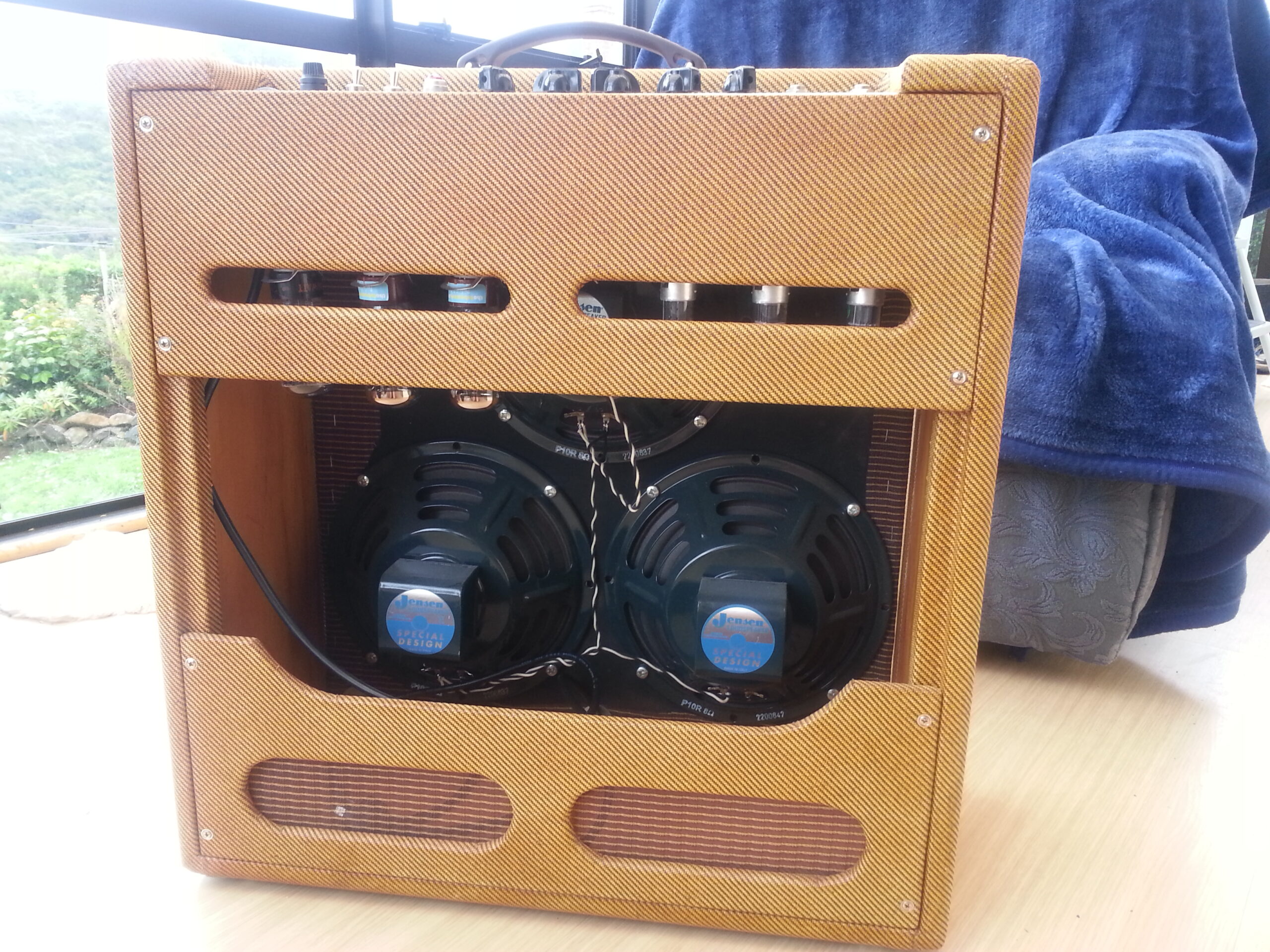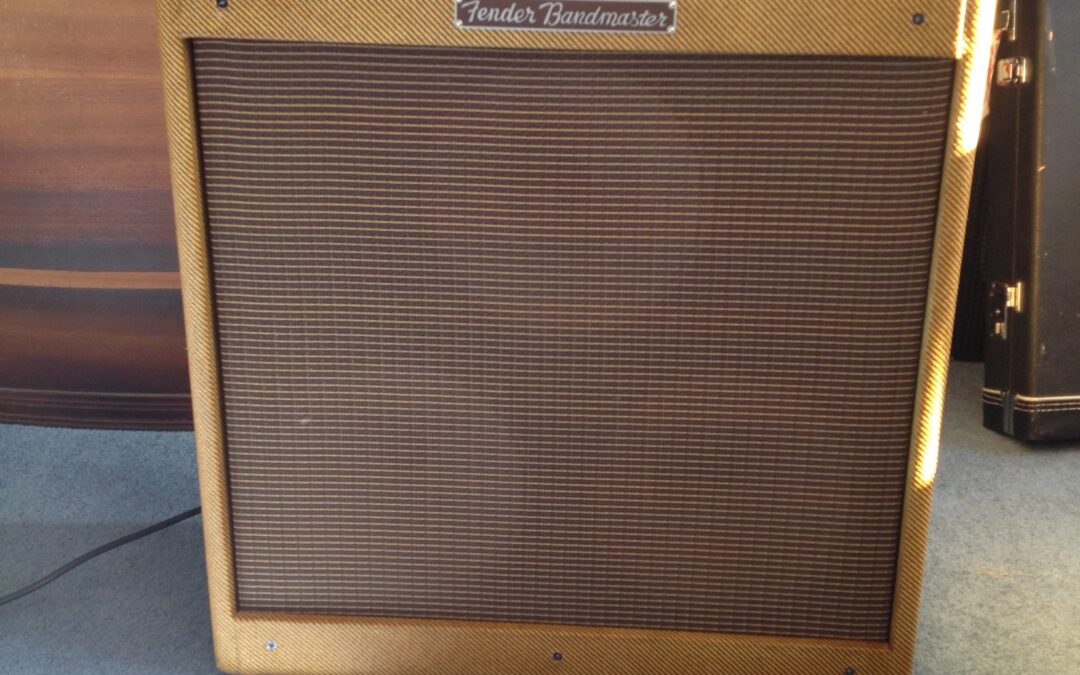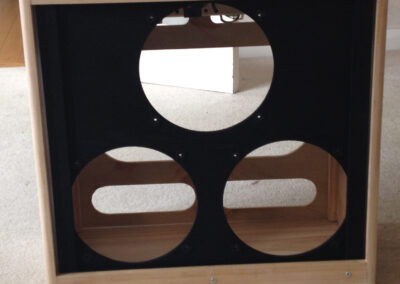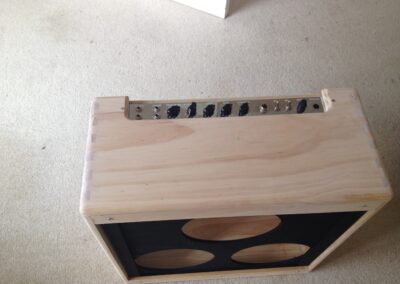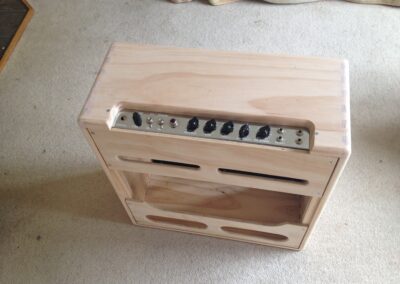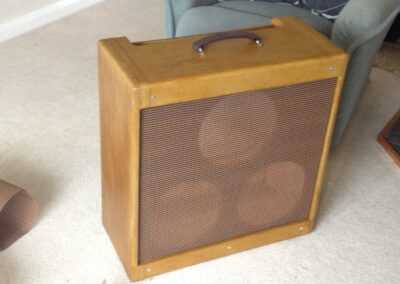Fender Tweed Bandmaster 5E7 Build
The Fender Tweed Bandmaster 5E7 (1955–1960) wasn’t just another amp—it was Leo Fender’s stealth revolution. Dubbed the “Bassman’s little brother,” this 3×10″ combo packed 26 watts of dual-6L6 power into a narrow-panel cab, delivering earlier breakup, richer texture, and a studio-friendly growl that became the secret weapon of tone connoisseurs.
Unlike the legendary 5F6-A Bassman, the 5E7 used a cathodyne phase inverter (like the tweed Deluxe) and smaller output transformer, producing softer lows and quicker, vocal-like distortion. Combined with lower plate voltage (~410V vs. Bassman’s 430V), it traded headroom for “sweet, singing” breakup at stage-friendly volumes.
Purists long believed its 3×8Ω Jensen P10R speakers demanded a 2.67Ω output transformer. Reality? Fender used the same 4Ω OT as the 2×10″ Super—deeming it “close enough.” Leo’s pragmatism birthed a slight mismatch that ironically enhanced its woody midrange sag
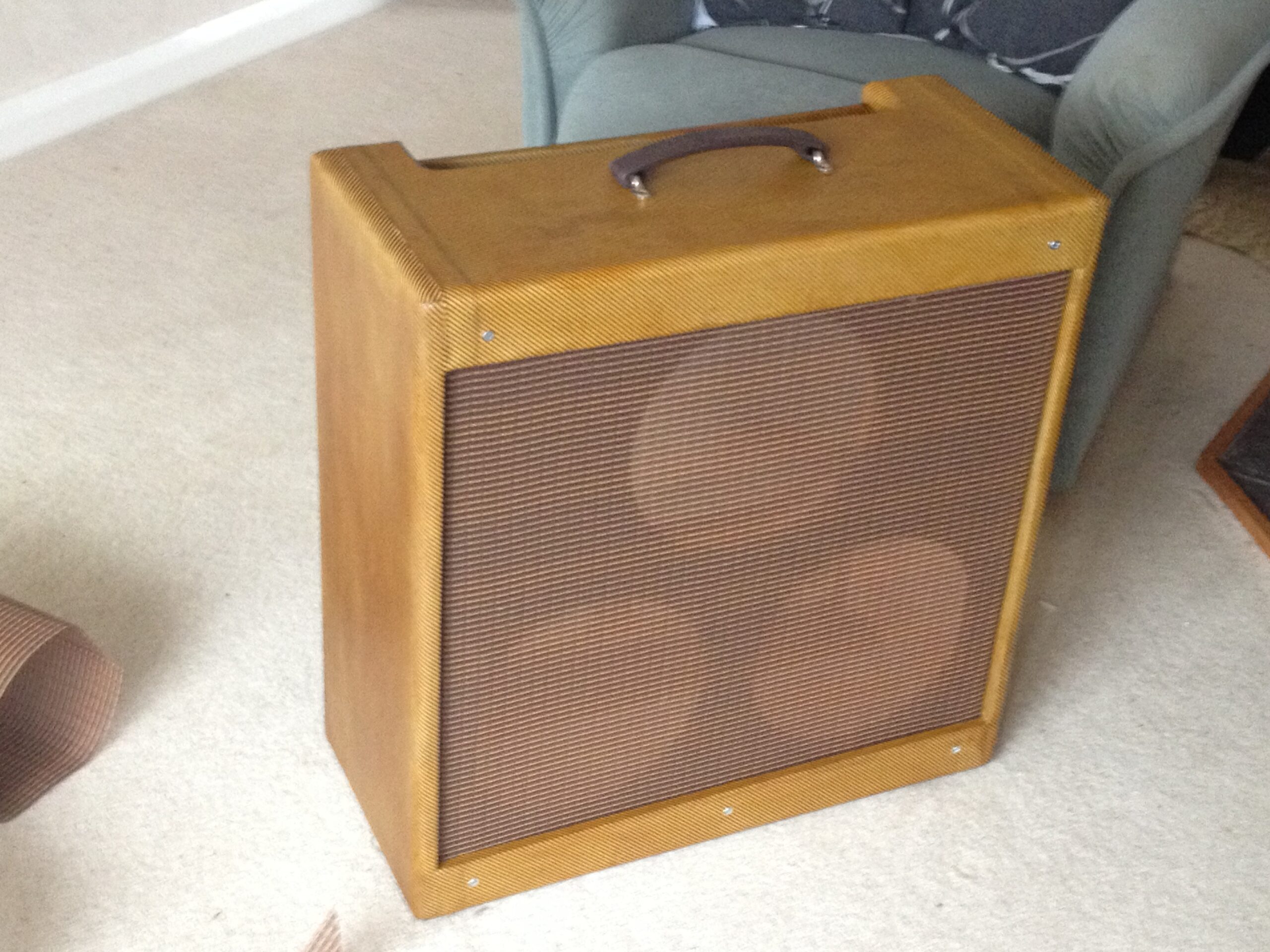
Picture taken just after the Gold shellac has been done.
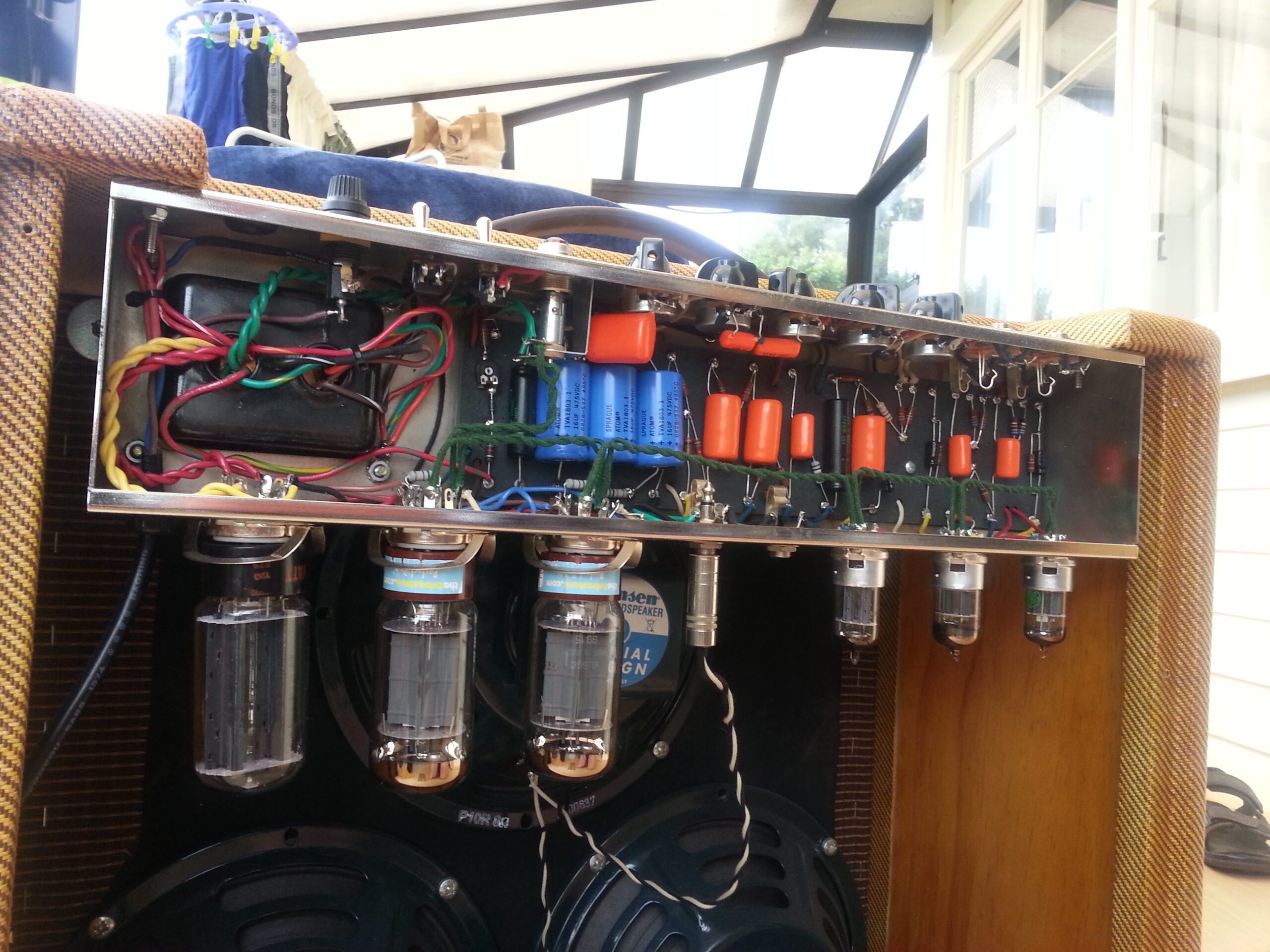
Chassis mounted and first play
